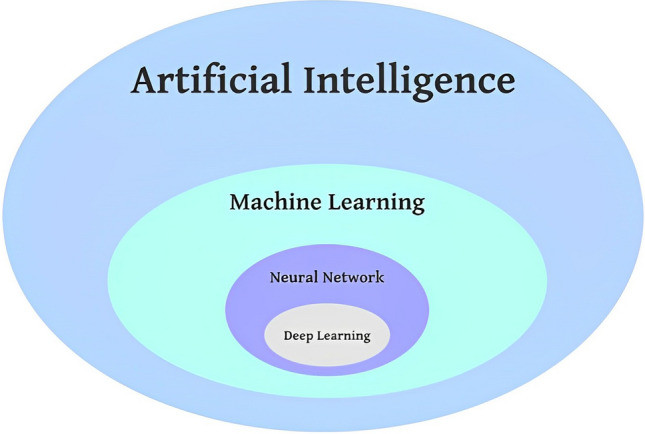Adaptive Deep Brain Stimulation emerges as a game-changing frontier in Parkinson’s disease treatment

Victoria d’Este
Posted: Oct 13, 2024 10:02 AM Updated: Oct 11, 2024 6:08 PM

Correction and fact check date: October 13, 2024, 10:02 AM
briefly
Adaptive deep brain stimulation (aDBS) offers a novel, individualized treatment option for Parkinson’s disease, providing significant advancements in medical technology and patient care.

Parkinson’s disease affects millions of people around the world and has long been a major medical concern. But new advances in medical technology, particularly deep brain stimulation (DBS), are giving new hope to patients and medical professionals alike. At the forefront of these innovations is adaptive deep brain stimulation (aDBS), a new technology that has the potential to completely transform how Parkinson’s disease is treated.
GlobalData, a renowned data and analytics company, highlighted how aDBS could completely change the way Parkinson’s disease is managed. Compared to existing DBS techniques, this technology is a major advancement that provides patients with more individualized and responsive treatment choices.
The Evolution of Deep Brain Stimulation
To properly understand the importance of aDBS, you must know the history of deep brain stimulation as a treatment for Parkinson’s disease. For many years, Parkinson’s disease patients with motor symptoms have been helped by traditional DBS. To modify neural activity, this technique involves implanting electrodes in specific brain regions and providing continuous electrical stimulation.
Although conventional DBS works well for many individuals, it has limitations. Regardless of the patient’s current symptom level, continued stimulation does not always result in optimal symptom relief and may lead to adverse outcomes. This is where aDBS comes into play, providing a more complex and individualized treatment process.
adaptive advantage
Adaptive deep brain stimulation has changed the paradigm of Parkinson’s disease treatment strategies. Unlike previous versions, aDBS uses sophisticated artificial intelligence algorithms to track brain activity in real time. Based on this continuous observation, the system can modify stimulation settings according to the patient’s current needs to create a personalized treatment plan around the clock.
This adaptive technology has several potential advantages. By providing stimulation whenever needed, aDBS can reduce the negative consequences of constant stimulation. Moreover, the system’s ability to adapt to symptom changes throughout the day may lead to more reliable symptom management and improved quality of life for patients.
A recent study conducted at the University of California, San Francisco (UCSF) provided strong evidence for the effectiveness of aDBS. The results of these tests, conducted in 2023 and 2024, showed that aDBS can significantly improve sleep and mobility in people with Parkinson’s disease. There have been reports of a 50% reduction in symptoms, which is a very notable result.
For those suffering from Parkinson’s disease, these results are not just statistics on a page, but provide real hope. The ability to consistently treat symptoms without frequent manual corrections has the potential to significantly improve patient independence and overall well-being.
The introduction of aDBS coincided with a significant expansion of the global neurological equipment market. GlobalData predicts that this market, worth $12.5 billion in 2023, will grow at a compound annual growth rate (CAGR) of 4.60% to reach $20.9 billion in 2033.
Increasing demand for cutting-edge neurological diagnostic and treatment technologies is reflected in this growth trend. As the population ages and the prevalence of neurological diseases such as Parkinson’s disease increases, the demand for creative solutions is also increasing.
The role of AI and digital health
The creation of aDBS is a component of a larger movement in healthcare, including digital health and artificial intelligence. These changes don’t just happen with implanted devices. This is also happening with wearable technology and digital health applications that can track symptoms and provide useful information to medical professionals.

For example, a new development has used information from wearable devices such as Apple Watch to track Parkinson’s disease symptoms outside of medical facilities. Personalized medicine has entered a new phase with integrated approaches to disease treatment that combine advanced implantable devices and external monitoring systems.
Regulators recognize the potential of aDBS. The U.S. Food and Drug Administration has been advocating for new approaches to the management of Parkinson’s disease, which represents a regulatory environment conducive to the use of these new technologies.
Although aDBS has a lot of potential, it is important to recognize the challenges that still lie ahead. Cost, accessibility, and long-term effectiveness must be carefully considered when implementing these cutting-edge technologies.
Additionally, the surgical procedure required to implant an aDBS system carries risks, just like any other implanted device. Widespread acceptance of these devices will depend on ensuring their long-term safety and reliability.
There is also a patient selection issue. To maximize the impact of aDBS, we need to understand which patients are most likely to benefit from it and at what stage of their disease they are. This requires ongoing investigation and improvement of treatment plans.
Widespread effects on neurology
There are consequences beyond Parkinson’s disease that result from the development of aDBS. The real-time monitoring and adaptive response concepts that underpin this technology could be used in the treatment of a variety of neurological disorders.
For diseases such as essential tremor, dystonia, and some psychiatric disorders, this creates interesting opportunities. Our ability to create specialized and effective treatments will advance along with our understanding of brain health and dysfunction.
More than simply relieving symptoms, the drug’s potential to adapt to the patient’s changing needs throughout the day holds the promise of a more autonomous and normal life for people with Parkinson’s disease.
The potential for better sleep, as shown in the UCSF experiment, is particularly noteworthy. Treating sleep disorders, a prevalent and sometimes disabling feature of Parkinson’s disease, can impact a patient’s overall health and well-being.
Additionally, side effects are likely to be reduced and requirements for manual adjustments may be reduced, reducing the daily challenges associated with treating the disease for both patients and caregivers.
The role of data and personalized medicine
The introduction of aDBS is in perfect harmony with the growing interest in personalized medicine. Through continuous data collection and analysis of each patient’s brain activity and symptom patterns, these devices have the potential to provide hitherto unheard-of insights into the course and treatment of Parkinson’s disease.
This wealth of information can help us better understand the disease overall, in addition to providing better care for specific patients. Future studies may utilize aggregated and anonymized data from aDBS systems to further improve treatment planning.
As aDBS, like other medical technologies, becomes more widely available, ensuring equitable access to it will be important. Although the technology is very promising, precautions must be taken to ensure it does not worsen health inequities that already exist.
This may include regulations to facilitate access to these treatments, training plans for health care professionals in remote areas, and cost-saving tactics. With Parkinson’s disease so prevalent across the world, a concerted effort is needed to make these technologies available outside rich countries.
disclaimer
In accordance with the Trust Project Guidelines, the information provided on these pages is not intended and should not be construed as legal, tax, investment, financial or any other form of advice. It is important to invest only what you can afford to lose and, when in doubt, seek independent financial advice. Please refer to the Terms of Use as well as the help and support pages provided by the publisher or advertiser for more information. Although MetaversePost is committed to accurate and unbiased reporting, market conditions may change without notice.
About the author
Victoria is a writer covering a variety of technology topics, including Web3.0, AI, and cryptocurrency. Her extensive experience allows her to write insightful articles for a wider audience.
more articles

Victoria d’Este

Victoria is a writer covering a variety of technology topics, including Web3.0, AI, and cryptocurrency. Her extensive experience allows her to write insightful articles for a wider audience.


